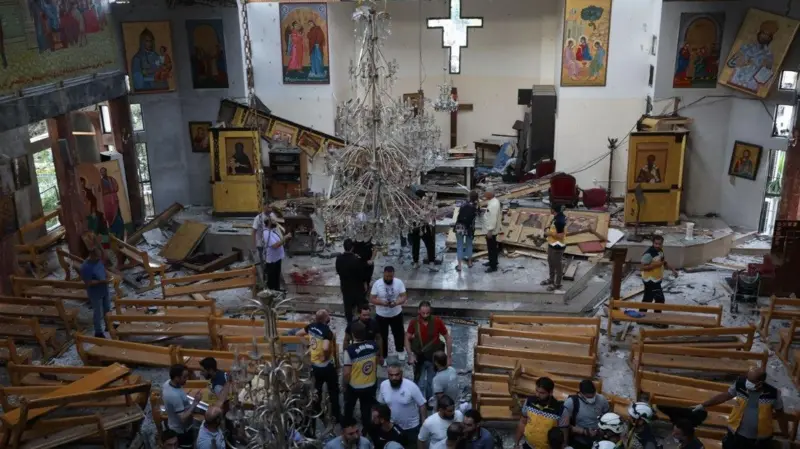Damascus Church Bombing Sparks Blame Game Between Syrian Government and SDF Over al-Hol Camp

The Syrian government has accused perpetrators of the deadly Damascus church bombing of originating from the SDF-controlled al-Hol camp, prompting a sharp rebuttal from the Syrian Democratic Forces (SDF), which categorically denied the allegations and urged Damascus to avoid fabricating claims or deflecting responsibility.
Context: On June 22, twin suicide bombers targeted a religious gathering at the Mar Elias Church in Damascus, killing at least 25 Christian worshippers and injuring over 60 others. Among the victims were women and children. The Syrian Ministry of Interior later claimed that the attackers were foreign nationals who had come from al-Hol camp in northeastern Syria. The SDF firmly rejected this narrative, stating that al-Hol does not host active militants but rather the families of ISIS members—mostly women and children. They emphasized that no one had left the camp recently except Syrians repatriated at the request of the Damascus government and Iraqis officially transferred under Iraqi supervision.
Analysis: The Mar Elias bombing is the deadliest attack since the fall of the Assad regime in December and signals the fragile security environment confronting Syria’s new leadership. Comparisons are already being drawn to post-2003 Iraq, where a power vacuum and security breakdown paved the way for waves of extremist violence—although the circumstances of regime change in the two countries differ substantially.
What stands out is the political messaging that followed the attack. The Interior Ministry’s quick assertion that the perpetrators had “no connection whatsoever to any Islamic missionary or preaching group” appears aimed at preemptively distancing Islamist factions associated with Hay’at Tahrir al-Sham (HTS), who now play a significant role in the post-Assad order. This statement is widely interpreted as an attempt to shut down speculation that hardline elements within HTS—especially foreign fighters—might have orchestrated the bombing.
This context is especially relevant given recent warnings from U.S. envoy Tom Barrack, who expressed concern that radical foreign elements inside HTS may oppose the direction of its leader Ahmad al-Sharaa and could attempt to assassinate him or destabilize the transition process.
This defensive posture gains additional weight given that Syria’s senior Christian leader, Patriarch John X Yazigi, publicly criticized al-Sharaa and appeared to hold the government accountable for the attack. Such criticism from the country’s most prominent Christian voice compounds the pressure on Damascus to demonstrate security competence.
The SDF’s counter-statement did more than deny the allegations; it indirectly accused the Damascus government of scapegoating. By implying that Damascus was externalizing blame for internal failures, the SDF pushed back against a narrative that could implicate them in Syria’s deteriorating security. Symbolically, their consistent reference to the “Damascus government” rather than the “Syrian government” reveals an intentional rhetorical distancing—positioning Damascus as just another power center rather than a legitimate national authority.

More broadly, the al-Hol angle is significant given renewed U.S. efforts to resolve the camp’s status. A Syrian government delegation recently visited the camp to coordinate repatriations, echoing similar moves by Iraq. Al-Hol has long been a geopolitical flashpoint: it houses thousands of ISIS-linked family members, some of them foreign nationals whose home countries refuse to repatriate them. For the SDF, the camp remains a key instrument of leverage—its existence places them at the center of a transnational counterterrorism dilemma.
Finally, the incident intersects with ongoing, troubled negotiations over the integration of SDF forces into the Syrian national military. The U.S. has called for swift integration, but talks have stalled over irreconcilable differences: the SDF insists on entering as a unified military bloc, while Damascus refuses to accept what it views as an “army within an army,” demanding individual assimilation instead. This deadlock underscores deeper mistrust and may delay resolution for the foreseeable future.









